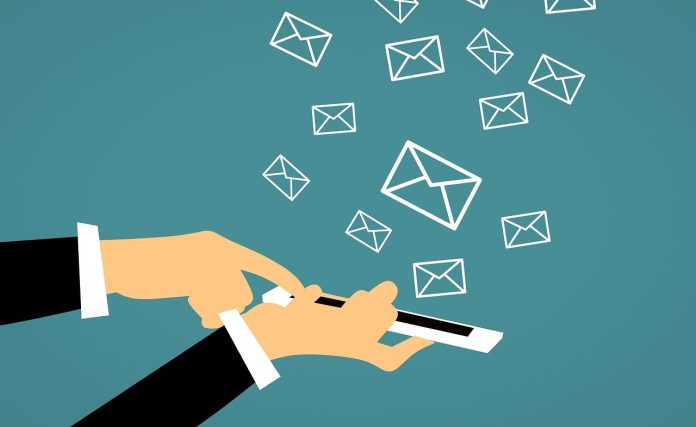By Jim Rudall, Head of EMEA at Intuit Mailchimp
 With the holiday shopping season behind us and the sales in full flow, retail marketers around the world are continuing to battle for consumer attention and engagement. In fact, research by Intuit Mailchimp shows that almost 26 billion emails were sent in November via its platform this year, with nearly seven billion alone being processed between the 23rd and 28th.
With the holiday shopping season behind us and the sales in full flow, retail marketers around the world are continuing to battle for consumer attention and engagement. In fact, research by Intuit Mailchimp shows that almost 26 billion emails were sent in November via its platform this year, with nearly seven billion alone being processed between the 23rd and 28th.
In addition, two-thirds of marketers estimated that the holiday period drives 21-40% of their company’s annual revenue, and e-commerce platform Shopify saw similar results this year. Globally, merchants using its platform secured $9.3 billion in sales over the Black Friday Cyber Monday weekend, up 24% compared to 2022. Therefore, it’s clear to see there is still a strong appetite from consumers to engage with businesses and look for deals at key moments of the year.
However, as competition for consumer eyeballs continues to increase, there is a danger that simply sending too many generic emails will lead to lost messages and reduced revenue, as marketers struggle to find different ways to connect with them. In a world dominated by information overload, it’s important businesses re-evaluate their email targeting head into 2024, and consider a new approach to email marketing that focuses on the personalised experience for consumers.
Less email doesn’t mean less revenue
This may seem counterintuitive, but there is one strategy that’s proving to be successful – marketers should send fewer emails. Our data shows that marketers actually grew revenue for their businesses by 1.08% year-on-year between November 2022 and 2023 by sending fewer emails, not more. While the email blast has been a well-trodden marketing tactic of the past, the technology is now in place for businesses to develop a more dynamic blend of data-driven, personalised strategies. Not only can this help improve business efficiency and performance, it can also increase engagement, as marketers can tailor approaches to different customers.
The more personalisation, the better
The key to reducing the volume of email is truly investing in how you personalise messages to those you want to speak to. Insight into the target demographic, their interests and what motivates them to spend are all important and can be differentiators from the competition. And research suggests that consumers want to be treated as individuals too; insights from Intuit Mailchimp’s 2023 Holiday Report shows that 73% of British and American consumers feel more valued when they receive personalised emails and offers.
Tools like segmentation, automation and AI can all help to deliver a more personalised message, build loyalty, drive conversion and lead to repeat purchases. For example, Intuit Mailchimp’s data found that those campaigns that were segmented between 1st and 30th November had a 1.65% higher click-through rate than those that weren’t, demonstrating just how much of a difference it can make to know your audience. By taking the time to learn which types of offer resonates with the different audience segments to generate the most sales, marketers can build out a strong personalisation strategy to help keep growing revenue.
Timing is everything
With so much traffic during key shopping periods such as Black Friday, timing becomes a vital strategy to cut through the noise. Our data shows that in the US alone, 1.8 billion emails are sent on average on Black Friday and 1.3 billion on Cyber Monday. Yet, in the two day sandwich over the weekend only 744 million emails a day are sent, with customer engagement staying steady across all four days.
This is just one example of the opportunities marketers can take advantage of, enabling them to reach consumers at slightly quieter times and keep their business top of mind to help drive sales. When coupled with effective personalisation, getting the timing right could be the difference between the success or failure of any given campaign. Understanding when consumers are more receptive to marketing can be just as important as the insight you have about them, allowing the opportunity to send less but more effective email.
So, time to put the blast in the past?
As one of the most prolific forms of communication available to marketers, email needs to be treated with respect. However, spam and cookie-cutter marketing activities that don’t consider the consumer have given it an undeserved bad reputation, especially during the holiday shopping period. This can be rectified though. By putting the generic email blast behind us, and instead adopting more personalised approaches that combine smart timing and creatives, marketers can increase their ROI without necessarily spending more or filling up their customers’ inboxes unnecessarily. Being more considered in their approach to email could see marketers yield better outcomes during the holiday season and throughout the year, resulting in stronger revenue and a more engaged customer base long-term.


